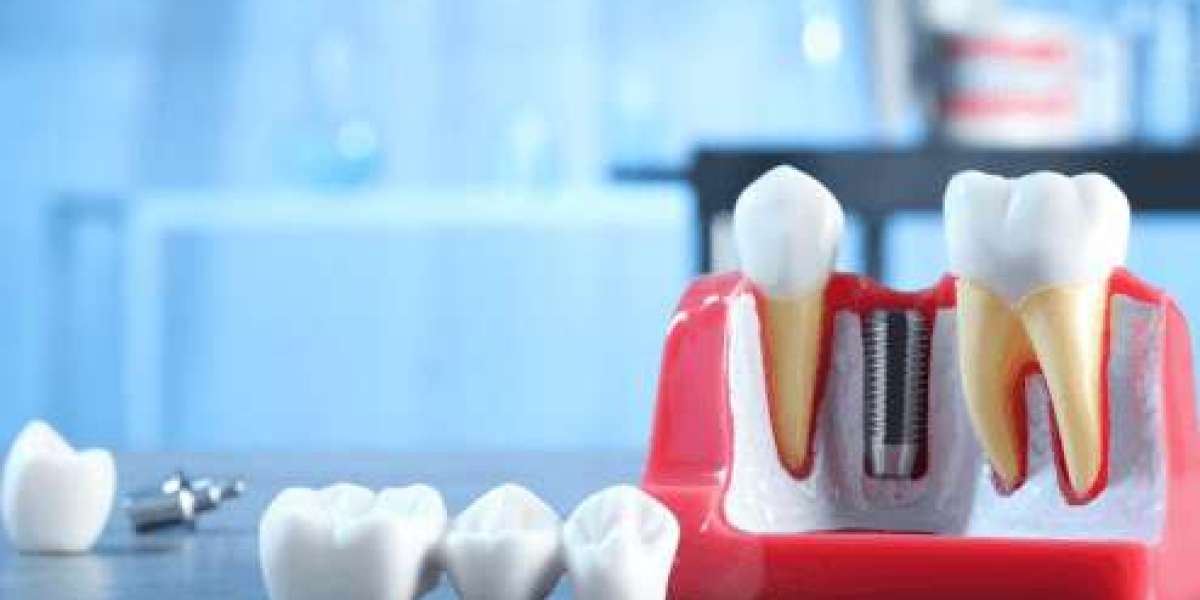Dental implants have revolutionised the field of restorative dentistry, offering durable and natural-looking solutions for missing teeth. For those seeking the best dental implants in London, understanding the various types available is crucial to making an informed decision. Let's delve into the different options to help you find the perfect fit for your smile.
What is the Best Type of Dental Implants to Get?
Selecting the right dental implant involves evaluating your unique oral health, bone density, and aesthetic goals. Options range from single-tooth implants for isolated gaps to All-on-4 dental implants, which support an entire arch using just four implants. For those seeking the best dental implants London offers, consulting with a qualified dental professional is essential to determine the most suitable solution for your smile.
- Endosteal Implants: These are the most common implants, inserted directly into the jawbone. They are typically screw-shaped and made of titanium, providing a strong foundation for artificial teeth.
- Subperiosteal Implants: Placed under the gum but above the jawbone, these are suitable for patients with insufficient bone height who cannot undergo bone augmentation.
- Zygomatic Implants: Used when there's inadequate bone in the upper jaw, these longer implants anchor into the cheekbone (zygomatic bone).
- All-on-4 Dental Implants: This technique supports a full arch of teeth using just four implants. It's cost-effective and requires less healing time compared to placing individual implants for each missing tooth.
For many, All-on-4 dental implants offer a balance between functionality and efficiency, especially when replacing multiple teeth.
Can Dental Implants Change Your Smile?
Absolutely! Dental implants not only restore functionality but also enhance aesthetics. Benefits include:
- Natural Appearance: Dental implants are meticulously designed to replicate the look and feel of natural teeth, ensuring they blend seamlessly with your existing teeth. This natural integration enhances the overall aesthetics of your smile.
- Bone Preservation: By stimulating the jawbone, dental implants help prevent bone loss, maintaining facial structure and preventing the sunken appearance that often accompanies missing teeth. This stimulation is crucial for preserving bone density and overall oral health.
- Improved Confidence: Restoring a complete smile with dental implants can significantly boost self-esteem, leading to improved social interactions and a better quality of life. The stability and permanence of implants allow individuals to speak, eat, and laugh without worry.
For those seeking the best dental implants London offers, consulting with a qualified dental professional is essential to determine the most suitable solution for your smile.
Is a Titanium or Zirconia Implant Better?
Titanium and zirconia are the primary materials used for implants:
- Titanium Implants: Known for their strength and biocompatibility, they have a long track record of success. However, they may show a greyish hue if the gum tissue recedes.
- Zirconia Implants: These are metal-free and tooth-coloured, offering a more aesthetic option. They are also biocompatible but have a shorter history of use compared to titanium.
The choice between the two depends on individual preferences, aesthetic concerns, and any metal sensitivities.
What Is the Most Successful Dental Implant Type?
Endosteal implants, particularly those made of titanium, have the highest success rates, often exceeding 95%. Factors influencing success include the patient's oral health, bone quality, and adherence to post-operative care.
How Much Time Does It Take to Complete a Dental Implant Procedure?
The timeline varies based on the type of implant and individual healing:
- Initial Consultation: Assessment and planning.
- Implant Placement: Surgical insertion of the implant.
- Osseointegration: Healing period where the implant fuses with the bone (3-6 months).
- Abutment Placement: Connecting piece between the implant and crown.
- Crown Placement: Attachment of the artificial tooth.
On average, the entire process spans 4 to 9 months. However, techniques like All-on-4 dental implants can expedite this timeline, often allowing for immediate placement of temporary teeth.
What is the Healthiest Dental Implant?
Both titanium and zirconia implants are biocompatible and considered healthy options. The "healthiest" choice depends on individual factors such as bone density, gum health, and any material sensitivities. Consulting with a dental professional will help determine the best option for your specific situation.
What is the Downside to Dental Implants?
While dental implants offer numerous benefits, potential downsides include:
- Surgical Risks: Infection, nerve damage, or sinus issues.
- Cost: Compared to alternative tooth replacement methods, implants may be more costly.
- Time Commitment: The process requires multiple visits over several months.
- Bone Requirements: Adequate bone is necessary; otherwise, bone grafting may be required.
It's essential to weigh these factors and discuss them with your dentist to make an informed decision.
What are the Advantages of All-on-4 Dental Implants?
An All on 4 dental implants provide a permanent, stable solution for replacing a full arch of teeth, enhancing aesthetics, improving oral function, and preserving jawbone health.
- Reduced Number of Implants: Only four implants are needed to support a full arch, minimising surgical interventions.
- Immediate Function: Patients often receive a temporary set of teeth on the same day as the surgery.
- Cost-Effective: Fewer implants and reduced surgery time can lower overall costs.
- Bone Grafting Avoidance: The strategic placement often eliminates the need for bone grafts.
These advantages make All-on-4 a popular choice for those seeking efficient and effective tooth replacement solutions.
Comparative Table: Dental Implant Types
Implant Type | Description | Pros | Cons |
Endosteal | Placed directly into the jawbone | High success rate, durable | Requires sufficient bone density |
Subperiosteal | Positioned under the gum but above the jawbone | Suitable for patients with low bone height | Less stable than endosteal implants |
Zygomatic | Anchored in the cheekbone | Useful for patients with severe bone loss | More complex surgical procedure |
All-on-4 | Full arch supported by four implants | Immediate function, cost-effective | May not be suitable for all patients |
Disclaimer: For more details, refer to Complete Smiles.
Conclusion
Dental implants have transformed restorative dentistry, offering durable and natural-looking solutions for missing teeth. Whether you're considering single implants, All-on-4, or other options, it's essential to consult with a dental professional to determine the best course of action tailored to your needs. At Complete Smiles, we specialise in advanced implant procedures, including All-on-4 and All-on-6, ensuring personalised care to restore your smile and confidence. Visit our website to arrange a consultation or for additional information.









